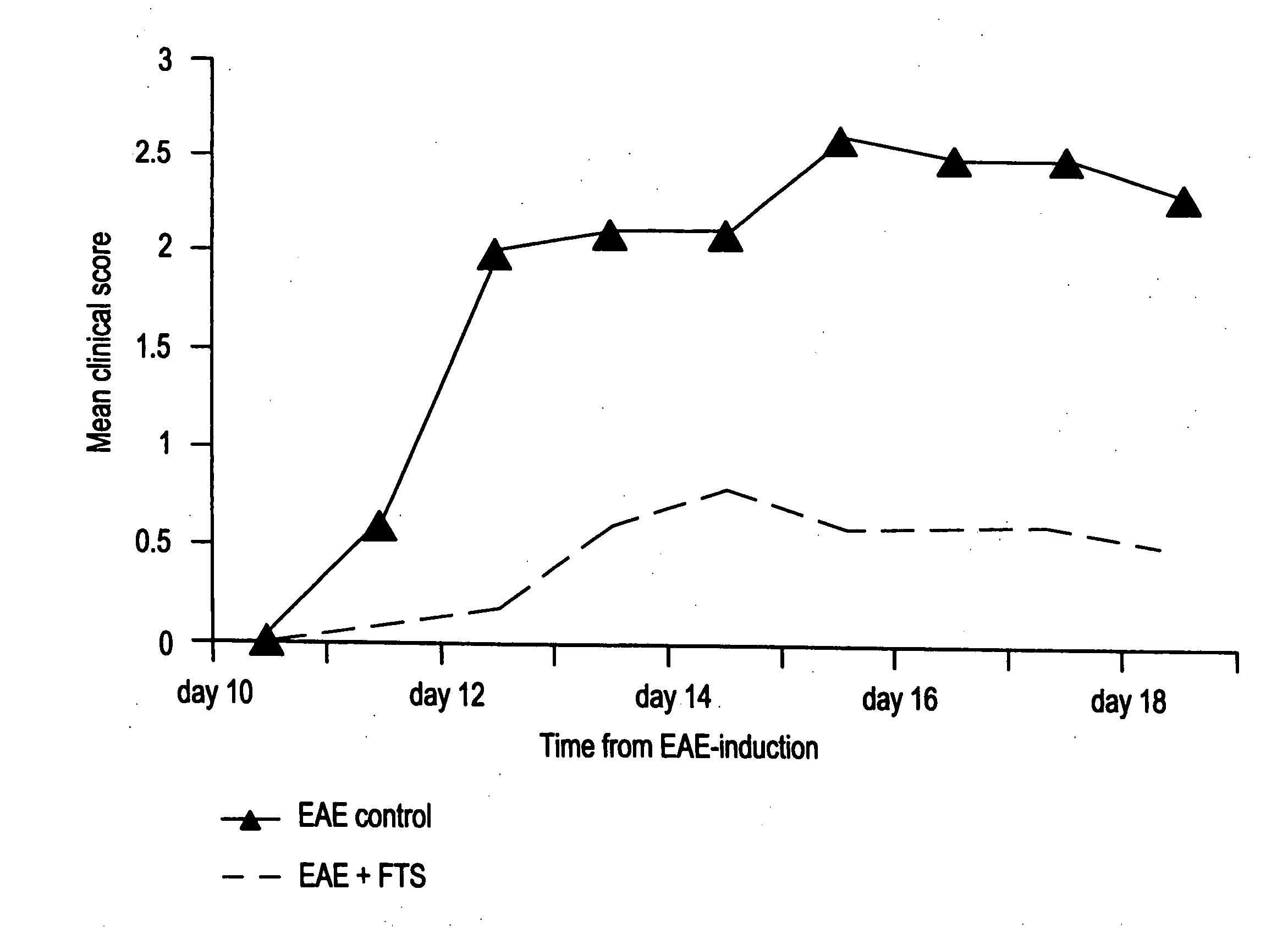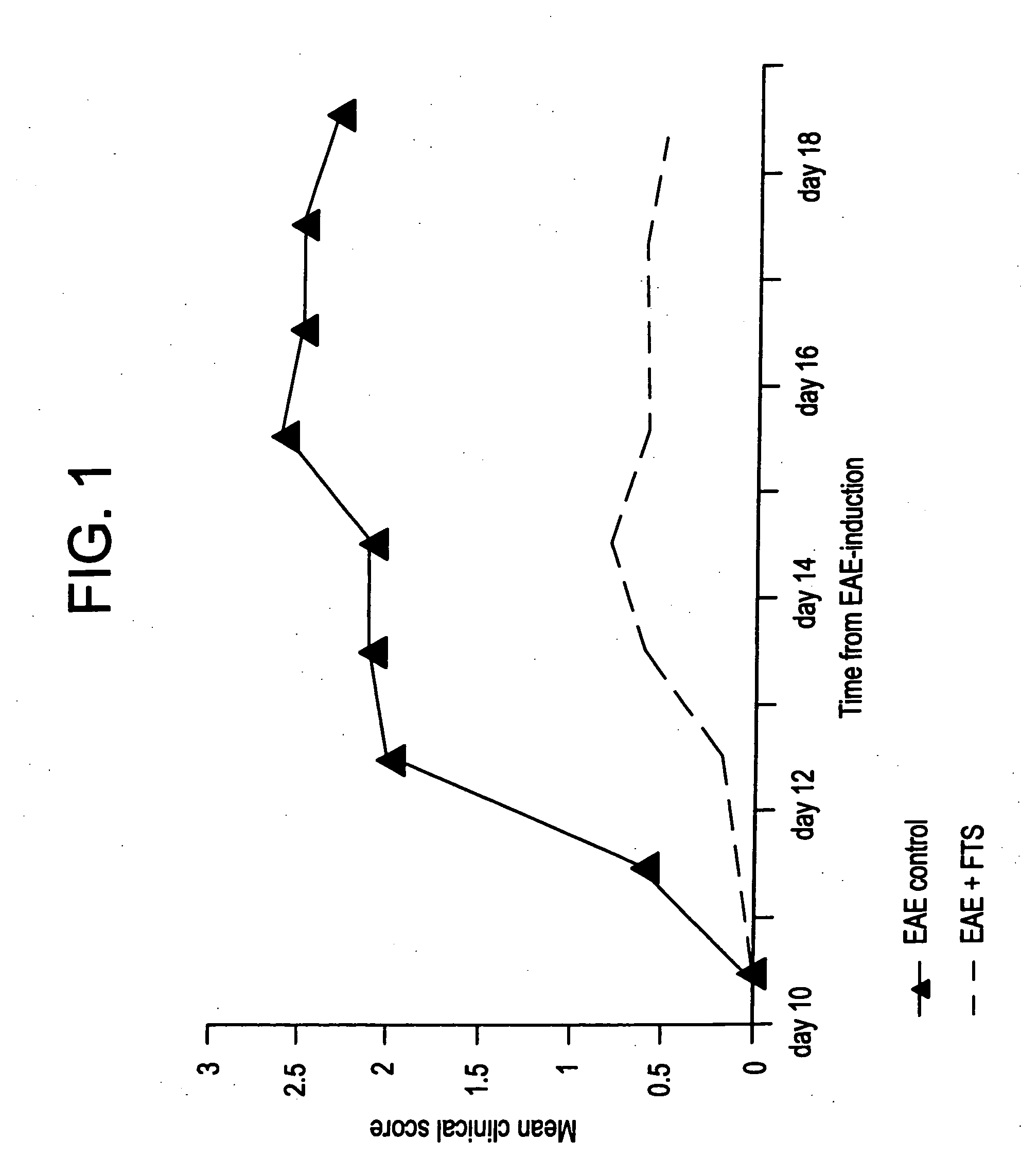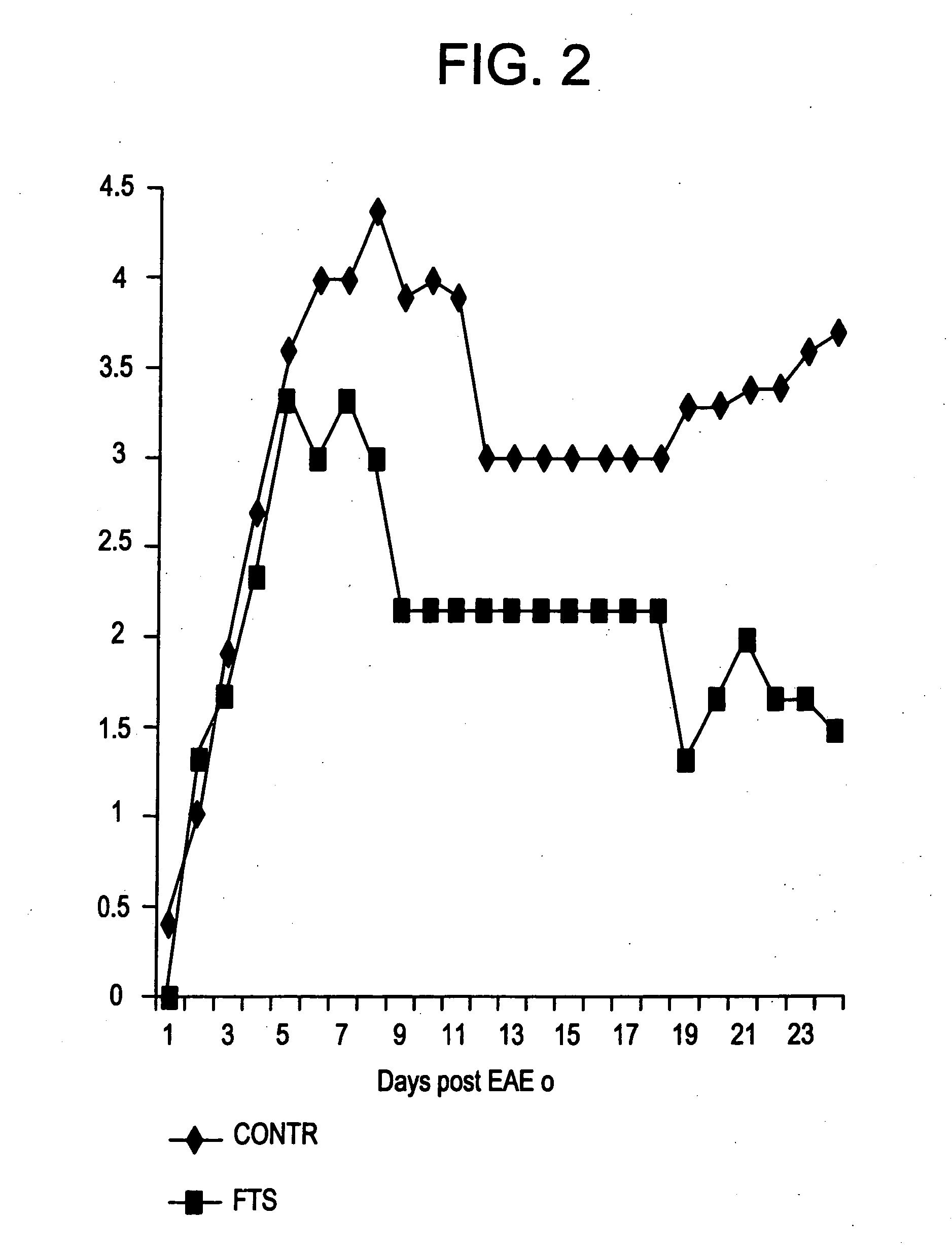Non-malignant disease treatment with Ras antagonists
- Summary
- Abstract
- Description
- Claims
- Application Information
AI Technical Summary
Benefits of technology
Problems solved by technology
Method used
Image
Examples
example 1
The Ras-Pathway Inhibitor, S-trans-trans Farnesylthiosalicilic Acid (FTS) Suppresses Experimental Allergic Encephalomyelitis
[0060] This example demonstrates the inhibitory effects of FTS on acute and chronic experimental autoimmune encephalomyelitis (EAE and CR-EAE).
[0061] Experimental autoimmune encephalomyelitis (EAE) is a T-cell mediated disease that serves as a model of the acute phase of multiple sclerosis (MS) (1-3). Chronic-relapsing EAE is a model of EAE with closer clinical and histopathological resemblance to MS (4-5). Clinically, in both models of EAE, the disease is presented with acute or relapsing paralytic signs and histopathologically by lymphocytic infiltrations into the white matter of the central nervous system (CNS) and a resulting myelin destruction. T-cells are activated, following presentation of the myelin antigens by macrophages and acquire the potential to invade through the blood-brain barrier into the CNS and attack the myelin. Therefore, treatments fo...
example 2
Treatment of Experimental Autoimmune Neuritis (EAN) by a Ras Inhibitor, S-farnesylthiosalicylic Acid (FTS)
[0102] This experiment shows the inhibitory effect of FTS on lymphocyte proliferation in connection with EAN.
[0103] Guillain-Barré syndrome (GBS) is the most common causes of acute generalized flaccid paralysis, with an annual incidence of 0.75 to 2 cases per 100,000 population. In Israel alone there are up to 100 new cases a year, many of them requiring respiratory support, long term intensive care hospitalization followed by rehabilitation. In spite of optimal treatment there are significant mortality and morbidity.
[0104] The pathogenesis of GBS is well characterized and involves an autoimmune post-infectious response in most cases. In contrast to the advances in the understanding of the disease, it is only in the last 10 years that effective treatments have been found for GBS. These include plasma exchange and intravenous immunoglobulins which are both expensive, do not a...
example 3
Treatment of the MRL / lpr Mice, an Animal Model of Systemic Lupus Erythematosus and Secondary Antiphospholipid Syndrome (APS), with the Ras Inhibitor Farnesylthiosalicylic Acid (FTS).
[0128] This experiment was conducted to examine the effect of FTS on laboratory and clinical parameters in the MRL / lpr mouse. The MRL / lpr mouse is a genetic model of a generalized autoimmune disease similar to systemic lupus erythematosus (SLE) and the antiphospholipid syndrome (APS) in the pathology of the immune system and in systemic manifestations of the disease. The experimental results indicate that FTS lessens the manifestations of autoimmunity in this genetically determined model.
[0129] SLE and APS are relatively common chronic diseases affecting multiple organs. The etiology is not known and may involve a genetic disposition interacting with environmental factors such as infectious agents (1, 2). Effective treatments of SLE and APS include corticosteroids and antineoplastic / chemotherapeutic a...
PUM
 Login to View More
Login to View More Abstract
Description
Claims
Application Information
 Login to View More
Login to View More - R&D
- Intellectual Property
- Life Sciences
- Materials
- Tech Scout
- Unparalleled Data Quality
- Higher Quality Content
- 60% Fewer Hallucinations
Browse by: Latest US Patents, China's latest patents, Technical Efficacy Thesaurus, Application Domain, Technology Topic, Popular Technical Reports.
© 2025 PatSnap. All rights reserved.Legal|Privacy policy|Modern Slavery Act Transparency Statement|Sitemap|About US| Contact US: help@patsnap.com



